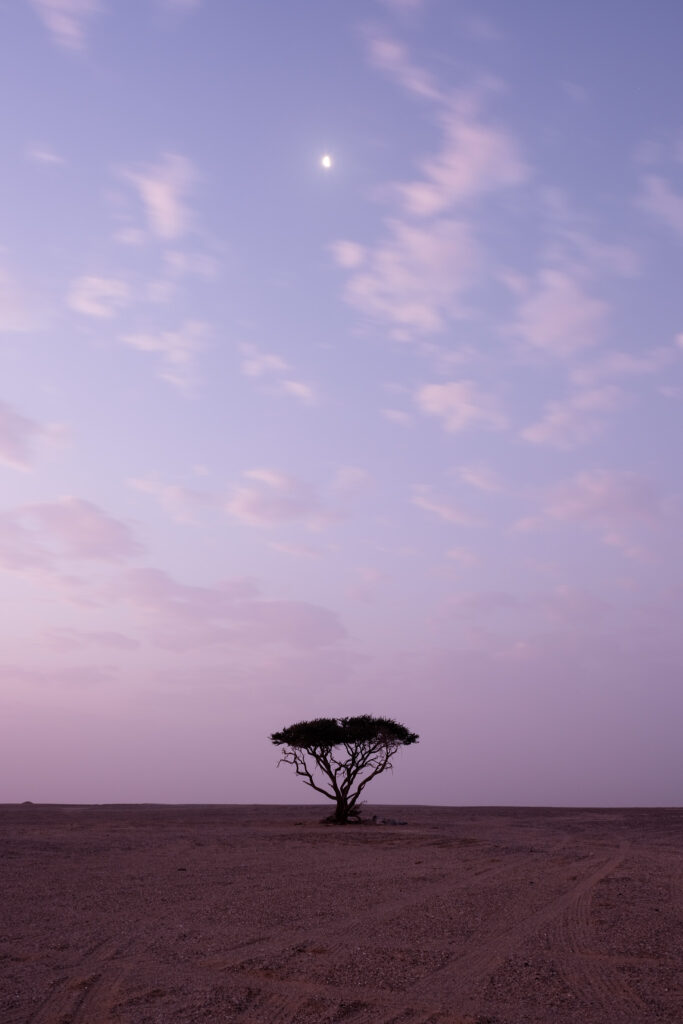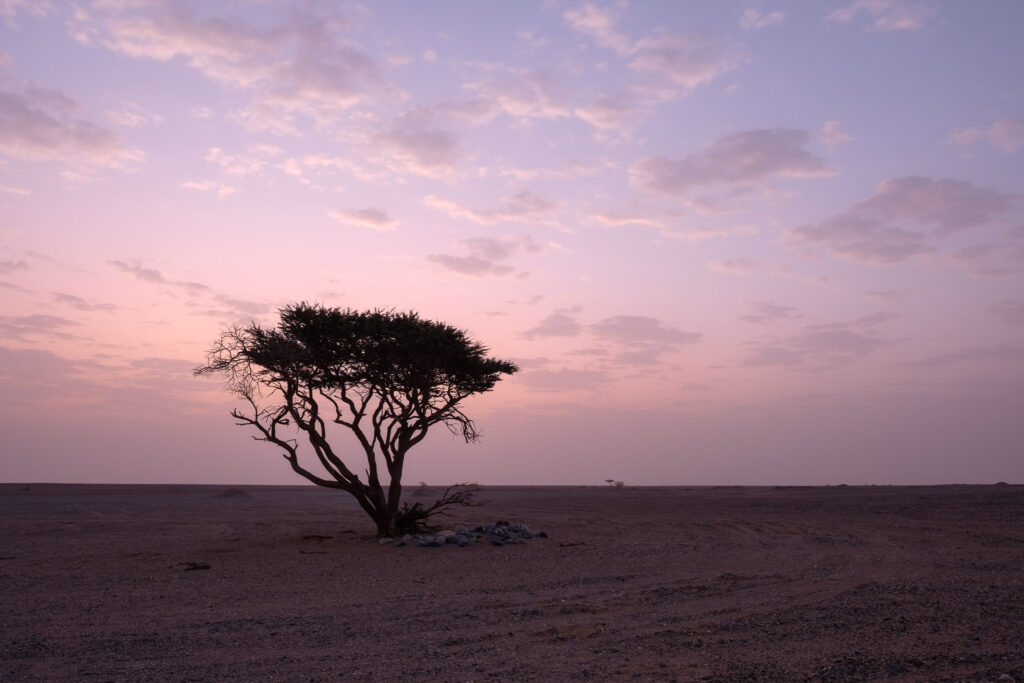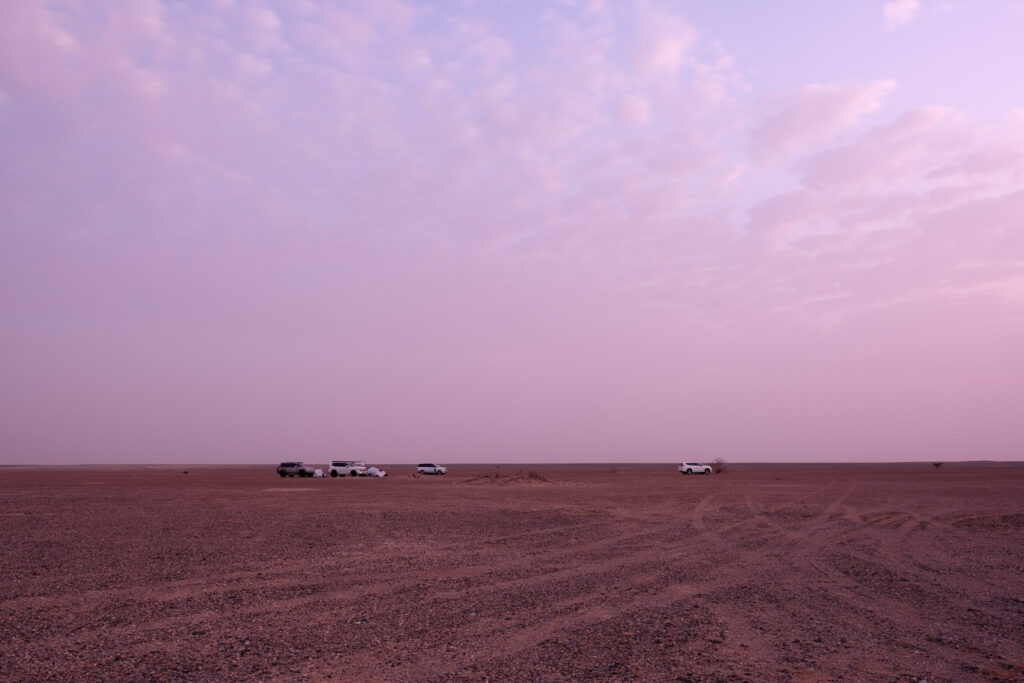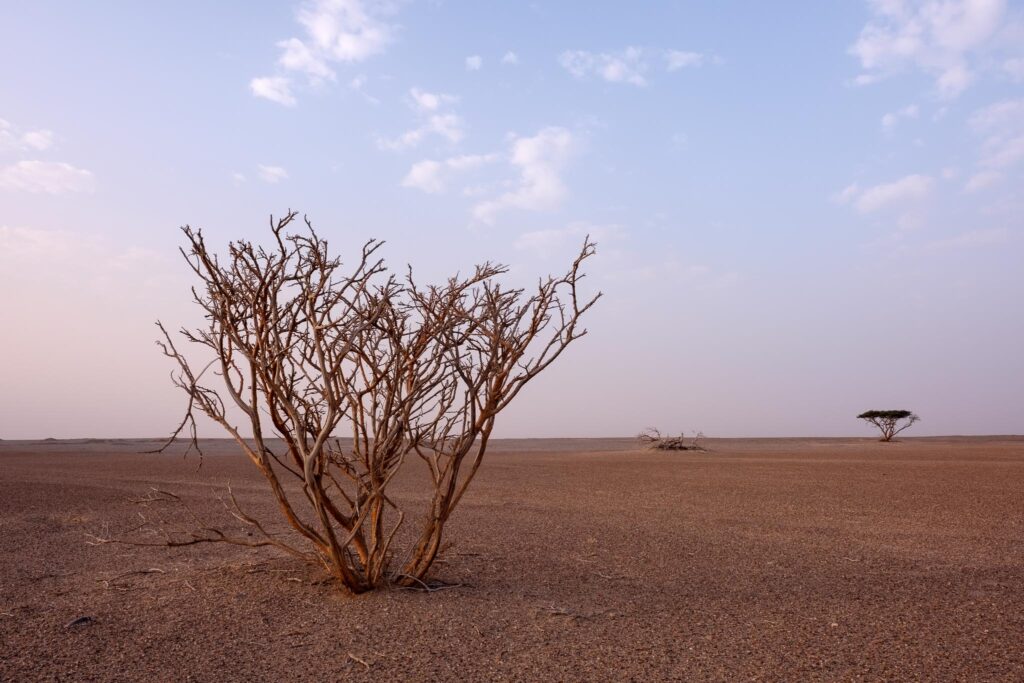This article is about a recent trip of the local astronomy group to a dark observation site, located south of the town of Adam, about a 2.5-hour drive from Muscat. During my first stay in Oman, I used to be part of the astronomy club, so I was glad to learn that it was still active. Every month, the group goes to a dark site during the weekend closest to the new moon, for some great night sky observation. There are some good experts in the group, with new telescopes and imaging gear, that can produce some stunning images of planets and deep sky objects; in my case, I simply enjoy looking through the telescopes, and take some photos to stack later, using trailing or accumulation options.
After an uneventful drive, we arrived at the site, which is in a flat gravel desert area that extends in every direction until the horizon. Most of the interior of Oman is like this, vast areas of flat landscape, where only a few shrubs appear here and there. As you can see on the following map, the light pollution levels are very low, which makes for excellent observation conditions.
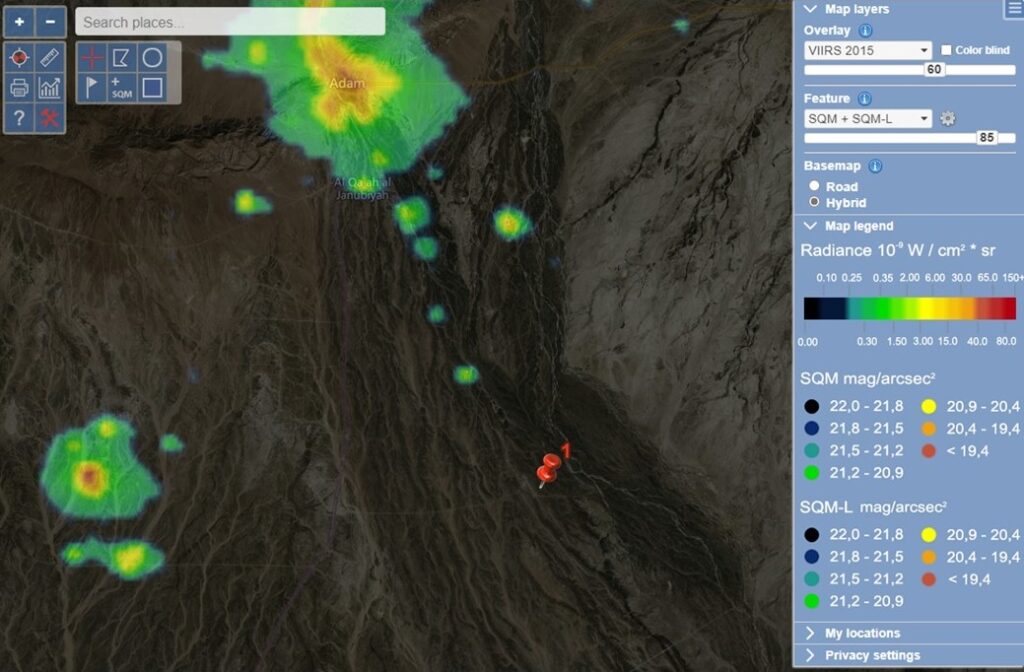
The wind had been quite strong during the day, kicking dust into the air, and we were concerned that might affect our viewing conditions. During the sunset, rather than abating, the wind picked up even more, bringing more dust with it. I walked around the campsite taking some photos and noticing potentially interesting compositions. The scarce shrubs provided interesting foreground subjects while framing the photos against the featureless landscape.
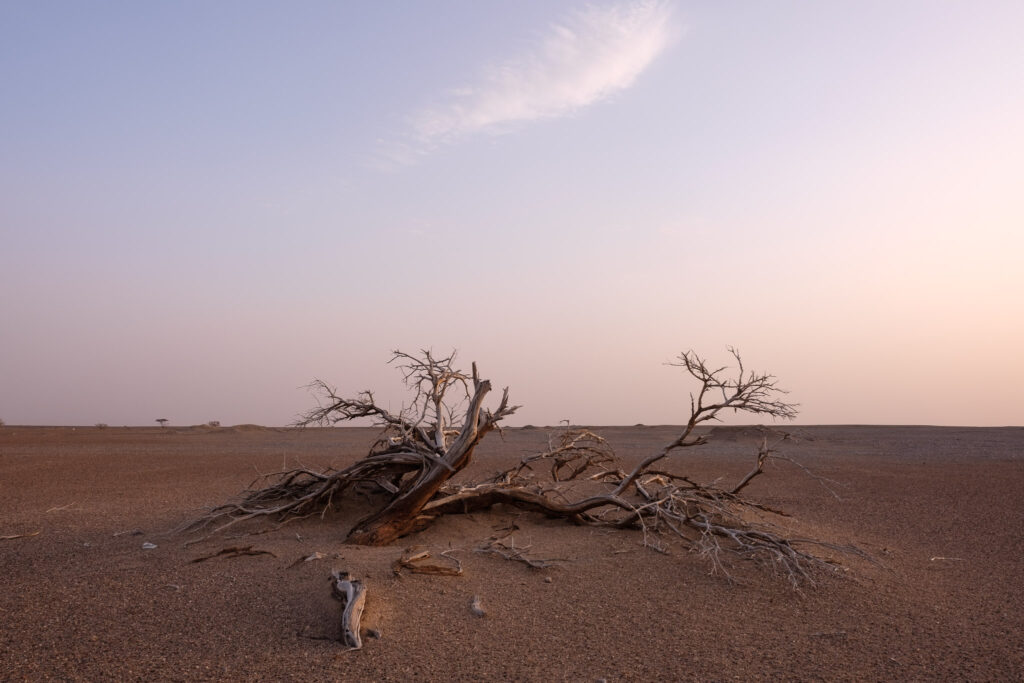
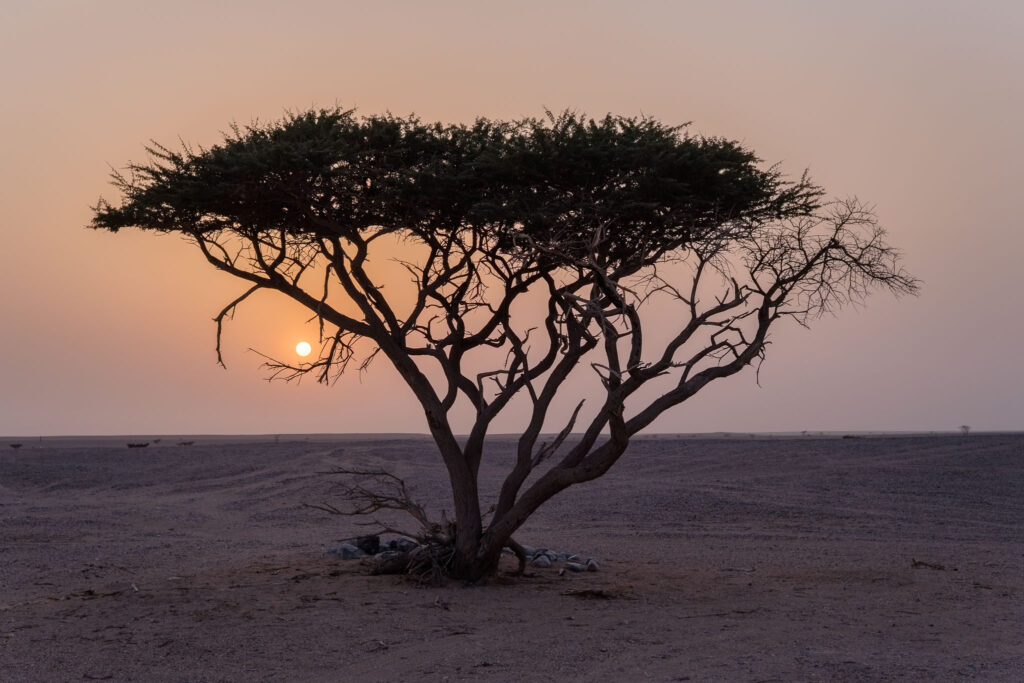
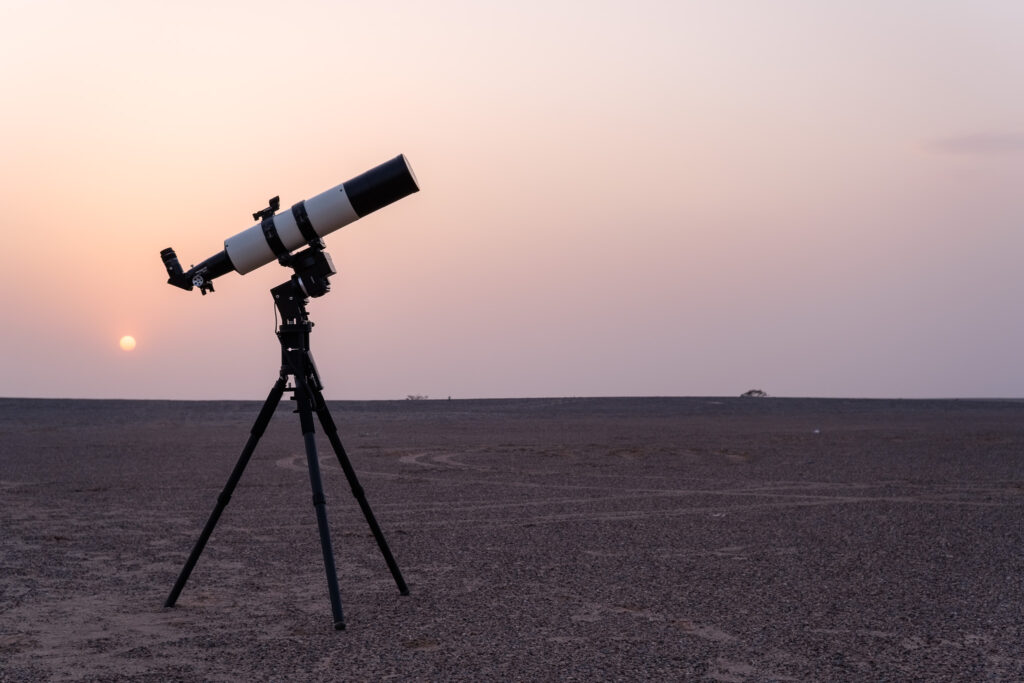
Fortunately, the dust cleared around 9 pm, but the wind continued to blow strongly. We were able to see some interesting objects, like Jupiter and a few double clusters; the highlight was the Orion nebula, with its dust and gas clouds clearly visible around the stars. Due to the wind, the telescopes were shaking a bit, so it was not possible to take images. Despite the strong wind, I decided to set up my Fujifilm XT-5 camera with the Fujinon 16mm f/1,4 lens on the tripod, and shot about 120 images at 30 seconds each, which resulted in 1 hour of total time. I framed a tree in the foreground, to provide a focal point against the night sky. After finishing the images for the star trail, I then mounted the XT-4 with the Voigtlaender X 35mm f/1.2 lens and took 10 photos of the Orion constellation. I used Sequator to stack both sets of images, the first one as a star trail, and the second one as accumulation.
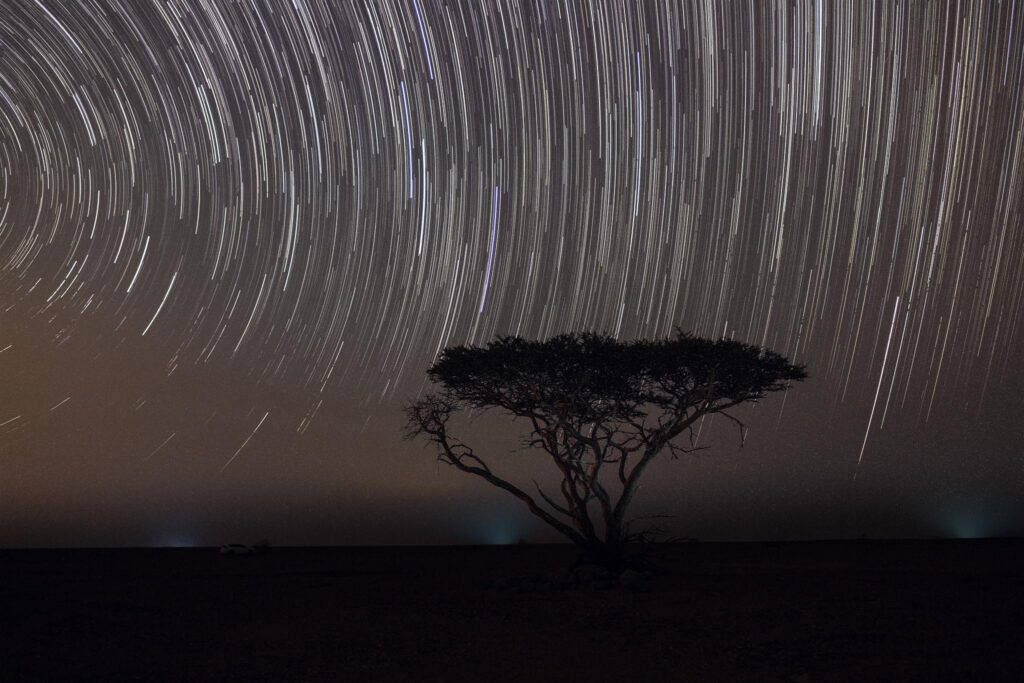
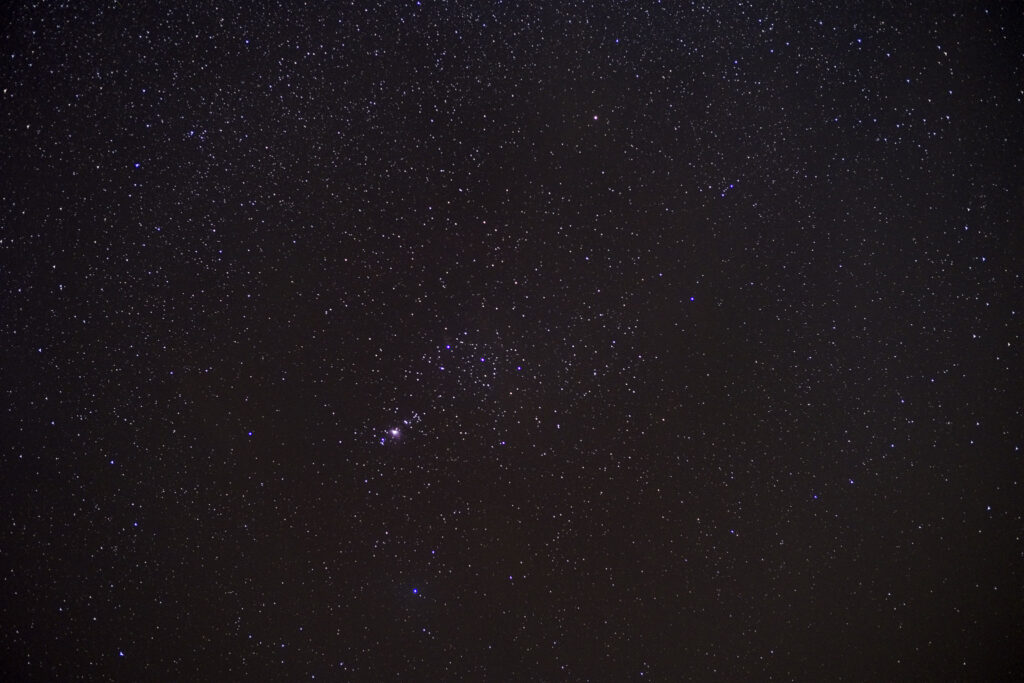
The following morning, before sunrise, the wind had died, and there was an eerie quietness due to the prevailing silence. A few crows were flying overhead. I walked around taking photos of the small trees and shrubs. There was still a lot of dust in the air, so when the sun came up, the light was diffused; I used this to shoot some photos of the trees against the rising sun, to good effect. Even with the wind and the dust, it was a nice trip, it is always good to go out in the field and spend the night under the stars.
